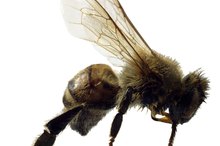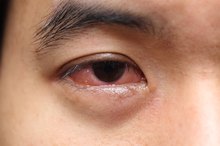How Does Your Body Produce Too Much Histamine?
The body produces too much histamine when it has an allergic reaction. An allergic reaction is an overreaction of the immune system to certain substances that do not affect most people, according to HealthMad. Common substances that produce too much histamine in the body are proteins found in foods, airborne irritants and insect venom. When someone has an allergy to a substance, her body will attack the allergen, resulting in high levels of histamine that lead to common allergy symptoms.
Process
An allergen enters the body through the skin or is inhaled. The immune system identifies the substance as potentially dangerous and creates antibodies to attack it. The IgE antibodies in turn affect mast cells throughout the body and cause the release of histamine, according to Davidson College. Histamine then increases inflammation and constricts smooth muscle.
Effects
Exercise & Histamines
Learn More
Too much histamine in the body will produce allergic reaction symptoms. Histamine can affect the nasal passages, the eyes, throat, skin or airways. High levels of histamine in the nasal passages cause nasal congestion, a runny nose and excessive sneezing, according to MayoClinic.com. The eyes and throat can become inflamed and irritated, leading to watery eyes and a scratchy throat. The skin may respond by developing a rash, such as eczema or hives. Histamine in the airways produces allergy-induced asthma, causing shortness of breath, wheezing and coughing.
Triggers
The most common triggers that lead to too much histamine production are airborne allergens. These include pollen, dust, mold spores and animal dander. Certain food proteins found in dairy, fish, tree nuts and eggs are known to cause an allergic reaction in the body. Venom from wasps or bees can cause high levels of histamine to be produced. Any medication can cause an allergic reaction in a person, according to MayoClinic.com.
Treatment
Signs & Symptoms of Throat Allergies
Learn More
Treating too much histamine in the body begins with avoiding known allergy triggers. Davidson College recommends taking an antihistamine drug to prevent the mast cells from producing histamine. Antihistamines are purchased over-the-counter or with a prescription. Some antihistamines can make the user drowsy, inhibiting her ability to function normally.
Warning
In rare cases, the immune system can cause the entire body to produce histamine, leading to anaphylactic shock, a life-threatening condition. Anaphylactic shock is most common among drug allergies, food allergies and insect venom allergies, according to MedlinePlus. Common symptoms include difficulty breathing, anxiety, wheezing, a faint pulse, nasal congestion, coughing and abdominal pain.
Related Articles
References
Writer Bio
Diane Marks started her writing career in 2010 and has been in health care administration for more than 30 years. She holds a registered nurse license from Citizens General Hospital School of Nursing, a Bachelor of Arts in health care education from California University of Pennsylvania and a Master of Science in health administration from the University of Pittsburgh.








